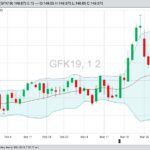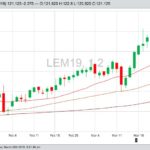Compared to the previous week, western Canadian feeder cattle sold steady to $4 higher the week ending March 23. Favourable spring weather enhanced demand for yearlings from major finishing operations; Lethbridge-area markets were notably $3-$5 higher as feedlots focused on local cattle. While feeding margins remain in negative territory, strength in the deferred live cattle […] Read more

Klassen: Feeder market incorporates risk premium following U.S. floods

U.S. livestock: Live cattle tumble on bearish USDA data
Chicago | Reuters — Chicago Mercantile Exchange live cattle futures dropped sharply on Monday in reaction to a government report that showed larger-than-expected supplies of cattle on feed in the U.S., traders said. Nearby cattle futures contracts fell more than 1.5 per cent, with selling accelerating as prices breached key technical support levels. The selling […] Read more

Klassen: Feeder market continues consolidation pattern
Compared to last week, western Canadian feeder cattle markets traded $3-$5 on either side of unchanged. The market was quite variable across the Prairies. Demand from south of the border evaporated due to adverse weather while southern Alberta experienced favourable spring conditions. Alberta packers were buying fed cattle at $260 on a dressed basis, up […] Read more

Klassen: Feeder market holds value
Western Canadian feeder cattle prices were relatively unchanged compared to seven days earlier. Buying interest for yearlings was somewhat stronger while calves in the eastern Prairie regions were softer. Moderate temperatures are in the seven-day forecast for most of Western Canada, so the risk discount due to adverse weather has evaporated. Barley jumped an additional […] Read more

Klassen: Feeder market sends mixed signals
Compared to last week, western Canadian yearling markets were steady to $4 lower while calves were steady to $2 higher. Barley prices have jumped $3-$6 per tonne over the past week, with winter conditions hindering off-farm logistics. Alberta packers were buying fed cattle in the range of $149-$150 last week; however, in Nebraska, fed cattle […] Read more

Klassen: Winter conditions weigh on feeder market
Western Canadian feeder cattle prices were relatively unchanged from week-ago levels. The major feeding regions from Alberta to the U.S. Midwest and southern Plains have all experienced severe storms and extreme temperatures. The forecast for southern Alberta calls for lows of -25 to -32 C over the next seven days. Auction markets have a few […] Read more

Klassen: Feeder cattle succumb to negative margins
Alberta fed cattle prices have dropped nearly $15 over the past three weeks. Feedlot margins are deep in red ink, with losses amounting to $200-250 per head. Compared to last week, yearlings and calves over 700 lbs. traded $3-$5 lower; calves under 700 lbs. were down $5-$8 with some feeder markets in Alberta dropping as […] Read more

Klassen: Fed cattle weakness pressures yearlings
Compared to last week, western Canadian yearlings and calves over 700 lbs. traded steady to $3 lower on average. Weakness in the fed cattle market weighed on the heavier replacements. Alberta packers were buying fed cattle at $155 on a live basis, down $7 from the highs seven days earlier. Barley prices were up $3-$5 […] Read more

Klassen: Feeder market easily absorbs adverse weather
Western Canadian feeder markets were relatively unchanged from week-ago levels but there were a couple of unique characteristics in certain regions. Quality yearling packages were $2-$4 higher in Alberta but fleshier replacements were discounted. Eastern Prairie regions had grass cattle under 600 lbs. trading $3 to as much as $8 above week-ago levels. Order buyers […] Read more

Klassen: Fed cattle market lifts feeder prices
Compared to last week, western Canadian feeder cattle markets traded $4 on either side of unchanged. Early in the week, the market was rather sluggish but a fortuitous bounce in the live cattle futures quickly spilled over into the feeder complex. Yearlings and heavier calves ended the week $2 to $4 higher. Feeding margins are […] Read more

